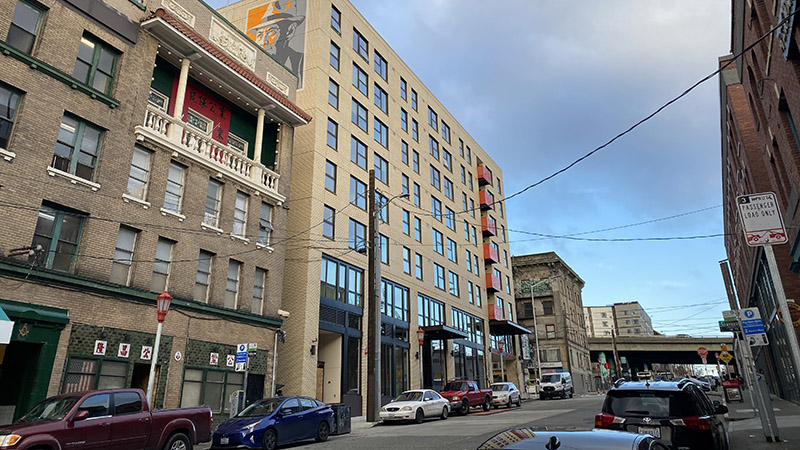
The Washington Trust for Historic Preservation supports legislation that creates more opportunities for housing and urban density while protecting our history and existing affordable housing stock. Exempting historic structures or districts listed on a national, state, or local register does not impede or create barriers to the development of housing.
There are relatively few local historic districts that feature primarily single-family building stock. In those that do, a significant portion has been converted to multi-family.
- National Register Districts are honorary. They place no restrictions on what a private owner may do with their property, up to and including demolition. There is no design review associated with National Register listed buildings, whether listed individually or as part of a district.
- In local registers and districts, generally a local preservation commission reviews nominations to determine if a building or district should receive designation. After buildings and districts are designated, the commission also reviews proposed development to ensure the historic resource is treated in a way that does not adversely impact the historic character. Changes to buildings are allowed to accommodate a proposed new use—such as housing in the case of a conversion or adaptive reuse—while retaining those features/elements that make the buildings/district historically significant (especially character defining exterior features).
- Where a National Register District overlays/aligns with a local historic district, such as Seattle’s Chinatown-International District and Pioneer Square, only the local listing results in building protections and design review. A National Register District has local design review only if the city (through council action) specifically authorizes such review.
Local historic districts can encourage and accommodate density. When a residential neighborhood is designated a local historic district, specific guidelines and development standards are created for that district, often allowing ADUs, conversion of existing single-family structures to two-or three-units, and subdivision of large lots to create a new buildable parcel.
Most locally listed historic districts are in downtown/commercial centers and are not single-family local historic districts.
- Seattle has eight local historic districts. Only one is in a neighborhood with a majority of buildings originally constructed as single-family homes. Several of these have been converted to multi-family, within the shell of the original single-family home.
- Tacoma has four local historic districts. Only two are primarily single family residential as originally built. Many homes have been converted to create additional units. ADUs are allowed in both residential historic districts.
- Spokane has five historic districts. Of these, only one includes a large number of single family houses as originally built—many of which have been converted to multi-family.
Both federal and state incentives encourage the rehabilitation and reuse of historic buildings. Rehabilitation of historic buildings are very often housing projects—not just market-rate but affordable housing, as developers often combine rehabilitation incentives with those that encourage development of low-income housing. In the last five years, federal rehabilitation incentives have led to the creation/rehabilitation of 1,158 housing units statewide. Of these, nearly 60% are considered low- and moderate-income housing units.
We believe with thoughtful policy considerations, historic resources can offer new opportunities for housing creation and historic districts can accommodate density while retaining important elements of our built environment.
Please contact your legislator to voice your support for historic and cultural resources throughout the state. Find sample text and more information here.
